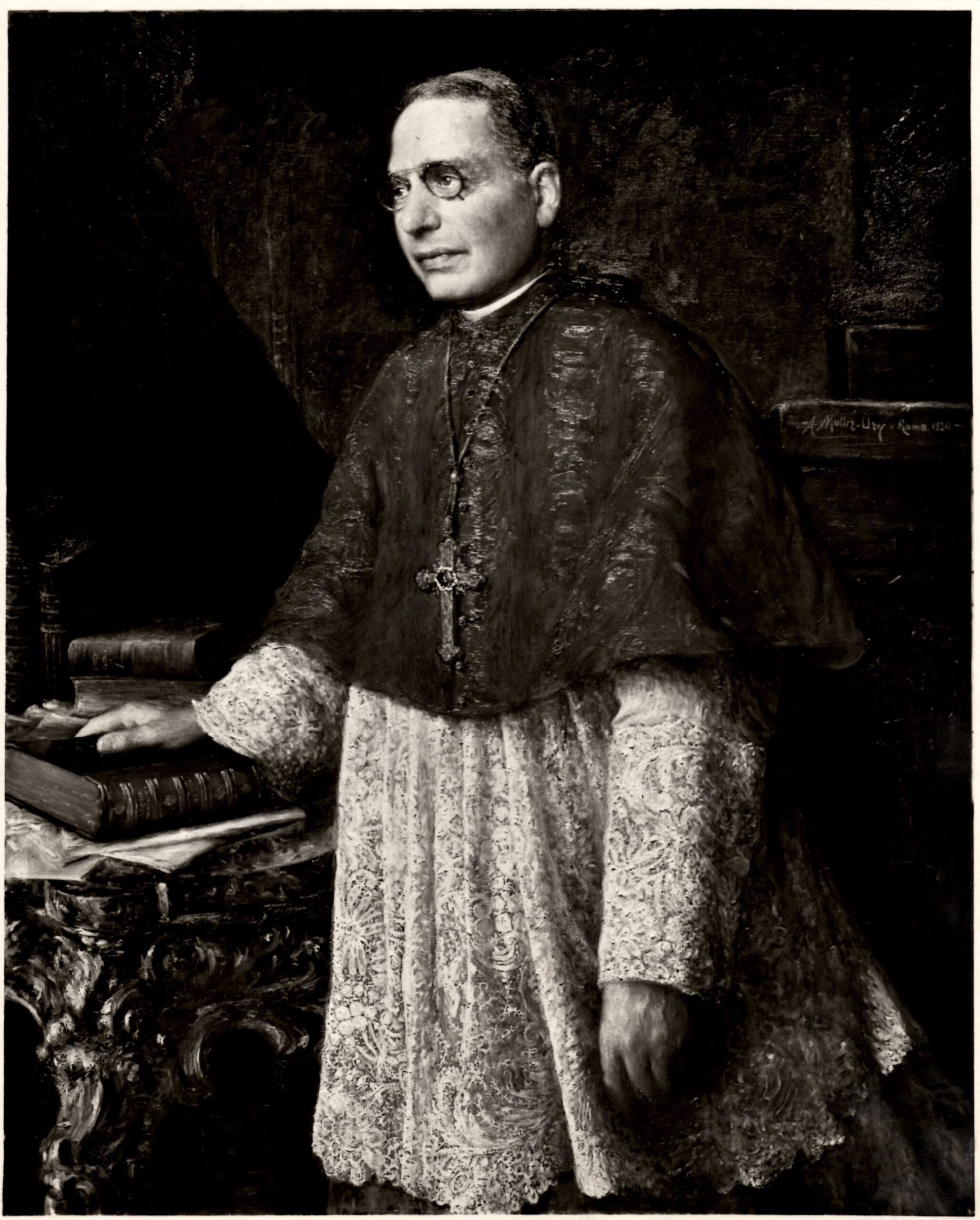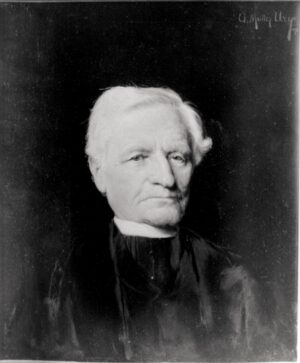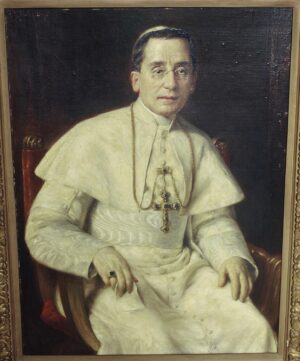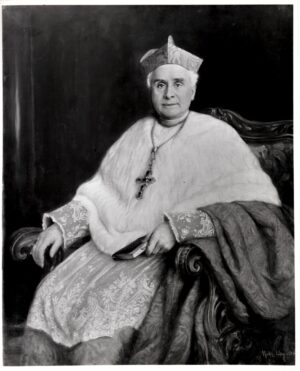CERRETTI, Bonaventura Cardinal
Description:
Three-quarter length standing beside a large gilt table, signed and dated upper centre right ‘A Muller Ury Roma 1930’.
Location:
Presumably Palazzo Municipale di Orvieto.
Bibliography:
Pasadena Post, California, Friday, December 5, 1930.
E. Cerretti, Il Cardinale Bonaventura Cerretti, Rome, 1939, p. 157, and Plate XIII, (opposite p. 368). Second edition, edited by Don Giuseppe De Luca, Rome, 1971, p. 148.
Cardinal Cerretti was born at Orvieto, Italy on June 17, 1872 and died in Rome on May 8, 1933. He was ordained into the priesthood in 1895 after studying at the Pontifical Seminary at the Vatican, at which, shortly afterward he became Professor of Classics (1898). He held this post for two years, and then became an official of the Tribunal Penitentiaria before joining the office of the Secretary of State in 1904. After serving as the Pope’s private chamberlain he was sent to Mexico as Secretary of the Apostolic Delegate, until in 1906 he went to Washington as Auditor, which post he relinquished in 1914 when he was created Archbishop of Corinth and Apostolic Delegate to Australasia. In 1917 he returned to the Vatican as Papal Secretary for Extraordinary Affairs carrying out Pope Benedict XV’s plans to ameliorate the hardships of prisoners of war. In Paris in 1919 he attended the Peace Conference as Papal Envoy. From 1921 to 1925 Monsignor Cerretti became Papal Nuncio (the first after 15 years of broken relations between the Vatican and France), and just before he left Paris was created a Cardinal by Pope Pius XI. In 1931 he was created Keeper of the Papal Seal. On March 13, 1933 he was created Cardinal Bishop of Velletri, was caught in a rainstorm, and took to bed with the pneumonia which caused his death, aged sixty. The sitter’s brother was Monsignor Cesare Cerretti, Canon of the Vatican who was with him when he died.
Biography of sitter: Vittorio de Marco, Un Diplomatico Vaticano All’Eliseo: Il Cardinale Bonaventura Cerretti, Roma, 1984.
—
Painted in Rome between about September 15 and about October 15, 1930. Amongst the artist’s papers is a letter from Cerretti dated November 15, 1930 which reads in part:
‘…You will be pleased to know that your portraits of the Holy Father and of myself are admired by all those who have had the opportunity of seeing them, and they are legions. Both portraits are wonderful. You have put in them as much of life as a most eminent and skilful artist can do…You may be sure that I will treasure your marvelous work all my life, and I feel very proud indeed to have it…’
See also under Pope PIUS XI (1930).
His sister Elvira Cerretti lived in Rome at Via della Scrofa in 1931, and published a biography of him in 1939 in which she described the portrait:
‘Il ritrattista americano Adolfo Muller Ury, suo amico, volle ritrarlo nel 1930; ed è uno dei migliori ritratti che abbiamo del Cerretti. Gli occhi liquescenti e le labbra baciate non sono del Cerretti, ma l’impostatura della persona, con la testa in avanti, sì; e sue sono le mani forti. Il pittore americano ha creduto forse di dover dare al suo modello in cotta e mozzetta, a Roma, un po’ di quella unzione che non avrebbe pensato necessaria a Washington in veste da clergyman. Ma, si vede bene, non c’era avvezzo; e non c’è riuscito. Ora il grande quadro è nel Palazzo Municipale di Orvieto, tra i ritratti di altri cardinali orvietani.’
Don Giuseppe De Luca (1971) repeated the exact words in his re-edition of this biography.
It is unclear as to why Elvira Cerretti gave the portrait such mixed criticism: she says it is one of the best portraits we have of her brother, but at the same time she criticizes the artist for portraying Cerretti in cardinal’s dress which she claims would not have been necessary in Washington but the artist thought necessary in Rome. She also seems to think his eyes and lips are not those of her brother, but clearly Cerretti himself thought otherwise. It is difficult to reconcile her view that the picture fails with known photographs of Cerretti at the end of his life. It seems likely that she would have preferred a simpler portrait, perhaps one that was less suited to a gallery of Orvietan cardinals.
The duotone photograph in the artist’s papers is stamped ‘Fotografia, Roma, Anderson.’





